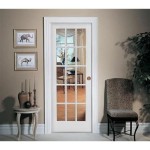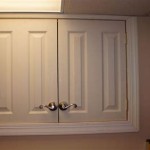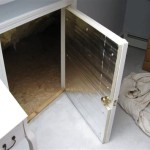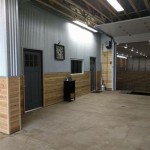A Comprehensive Guide To Prehung Interior Doors With Frames
Interior doors are essential components of any building, serving to delineate spaces, offer privacy, and contribute to the overall aesthetic appeal of the interior design. Among the various types of interior doors available, prehung doors with frames represent a popular and convenient choice for both new construction and renovation projects. This article provides a comprehensive guide to prehung interior doors with frames, covering their components, benefits, installation process, common issues, and maintenance considerations.
A prehung door, as the name suggests, is a door that comes already mounted within a door frame. The frame is typically constructed from wood or composite materials and includes the side jambs, the head jamb, and the door stop. The door slab is then pre-attached to the frame using hinges. The assembly also includes hardware such as the doorknob or lever, the latch, and the strike plate, which are pre-installed at the factory. This pre-assembly offers a significant advantage because it eliminates the need for individual fitting and alignment of the door and frame, saving time and labor during installation.
In contrast, a slab door is simply the door itself, without the frame. Slab doors are typically used to replace existing doors within existing frames. Installing a slab door requires precise measurements, cutting, and fitting to ensure proper alignment and functionality within the existing frame. This can be a more labor-intensive and challenging process, especially for individuals without carpentry experience.
Key Components of a Prehung Interior Door
Understanding the components of a prehung interior door is crucial for selecting the appropriate door for a specific application and for performing necessary maintenance or repairs. The primary components are described below:
Door Slab: The door slab itself is the main component, providing the barrier between spaces. Door slabs are available in various materials, including solid wood, hollow-core, solid-core, and composite materials. Solid wood doors offer superior sound insulation and durability but are typically more expensive and heavier. Hollow-core doors are lightweight and more affordable but offer less sound insulation and are more susceptible to damage. Solid-core doors offer a balance between weight, durability, and cost. Composite doors often utilize engineered wood products for increased stability and resistance to warping or cracking.
Door Frame: The door frame surrounds the door slab and provides structural support. The frame consists of three main parts: the head jamb (the top horizontal piece), the side jambs (the vertical pieces on either side), and the sill (the bottom horizontal piece, although this is less common in interior applications). The jambs are typically made of wood but can also be constructed from composite materials.
Hinges: Hinges connect the door slab to the door frame, allowing the door to swing open and closed. The number and type of hinges used depend on the weight and size of the door. Common hinge types include butt hinges, ball-bearing hinges, and spring hinges. Butt hinges are the most common type and are mortised into both the door and the frame. Ball-bearing hinges are designed for heavier doors and provide smoother operation. Spring hinges are used for self-closing doors.
Door Stop: The door stop is a narrow strip of wood or composite material that is attached to the door frame. It prevents the door from swinging past the frame and provides a tight seal when the door is closed. The door stop is typically located on the inside of the frame.
Door Hardware: Door hardware includes the doorknob or lever, the latch, and the strike plate. The doorknob or lever is used to operate the latch, which secures the door in the closed position. The strike plate is mounted on the door frame and provides a receptacle for the latch bolt.
Advantages of Using Prehung Interior Doors
Prehung interior doors offer several advantages over slab doors, making them a popular choice for homeowners, contractors, and builders. These advantages include:
Ease of Installation: Prehung doors are designed for easy installation. Because the door is already mounted in the frame and the hardware is pre-installed, the installation process is significantly simplified. This makes prehung doors a good option for DIY projects and can reduce labor costs compared to installing slab doors.
Consistent Quality: Prehung doors are manufactured in a controlled factory environment, ensuring consistent quality and precise alignment. This eliminates the risk of errors that can occur when fitting a slab door into an existing frame. The factory setting also ensures the quality of the hardware and the proper installation of the hinges, latch, and strike plate.
Improved Energy Efficiency: Prehung doors often provide a better seal than slab doors, reducing drafts and improving energy efficiency. The tighter fit between the door and the frame helps to minimize air leakage, which can lower heating and cooling costs.
Time Savings: The pre-assembly of prehung doors saves a considerable amount of time during installation. This is particularly beneficial for large projects with multiple doors. The time savings can translate into reduced labor costs and faster project completion.
Reduced Waste: Since prehung doors are made to specific dimensions, there is less waste generated during installation compared to fitting a slab door. This reduces the amount of material that ends up in landfills and contributes to a more sustainable building process.
Installation Process for Prehung Interior Doors
The installation of a prehung interior door involves several steps that must be followed carefully to ensure proper operation and alignment. While prehung doors are easier to install than slab doors, precision and attention to detail are still essential.
Preparation: The first step is to prepare the opening for the new door. This involves removing the old door and frame, if applicable. Clean the opening and ensure it is free of debris. Check the rough opening for squareness and plumbness. If the opening is not square or plumb, it may need to be adjusted before installing the new door.
Fitting the Door Unit: Carefully lift the prehung door unit into the rough opening. Use shims to adjust the door frame and ensure it is level and plumb. Insert shims behind the hinge side jamb, the latch side jamb, and the head jamb. Check the door for proper swing and alignment. The door should open and close smoothly without binding or rubbing.
Securing the Frame: Once the door frame is properly aligned, secure it to the wall framing using screws or nails. Drive screws through the shims and into the wall studs. Be careful not to overtighten the screws, as this can warp the frame. Check the door for proper operation again after securing the frame.
Insulating the Gap: After the frame is secured, insulate the gap between the frame and the rough opening with fiberglass insulation or spray foam. This will help to reduce drafts and improve energy efficiency. Be careful not to overfill the gap, as this can put pressure on the frame and cause it to warp.
Finishing: The final step is to finish the installation by trimming any excess shims and caulking the gap between the frame and the wall. Install the door casing to conceal the gap and provide a finished appearance. The door can then be painted or stained to match the interior decor.
Proper installation is critical for the longevity and functionality of the prehung door. It's advisable to consult professional carpenters if uncertainty arises during any step of the process.
In conclusion, prehung interior doors with frames offer a convenient and efficient solution for interior door installation. Their pre-assembled design simplifies the installation process, reduces labor costs, and ensures consistent quality. By understanding the components, advantages, and installation process of prehung doors, individuals can make informed decisions and achieve successful door installations for new construction or renovation projects.

Choosing Interior Doors A Comprehensive Guide Doorsan

Prehung Doors Important Tips More Blog

Prehung Doors Important Tips More Blog

A Buyer S Guide To Internal Doors Blog Doordeals

Guide To Interior Door Styles And Types

Guide To Interior Door Styles And Types

Is It Er To Buy A Pre Hung Door By Doors More

A Guide To Updating Your Doors And Hardware Jenna Sue Design

A Comprehensive Guide To Diffe Types Of Doors For Homes

What You Need To Know About Dallas Door Installation
Related Posts








